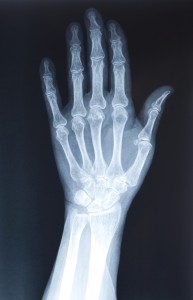What is Arthritis and How Can You Fight It?
As an orthopedic surgeon at Beth Israel Deaconess Medical Center, Dr. DeAngelis specializes in Sports Medicine and Shoulder Surgery. Please know that this blog reflects his thoughts and opinions only, and should not be taken as medical advice. Health concerns should be discussed with your medical provider.
Some 50 million people in the United States — 1.2 million in Massachusetts — have arthritis. Indeed, for every ten people who read this blog, at least one will have joint pain and limited motion due to the effects of joint disease. But what is arthritis and how does it happen?
In the spirit of keeping things simple, let’s start with some definitions: arthritis is a disease of the joints, and a joint occurs anywhere two bones meet. To help the joint move smoothly and painlessly, there is a layer, almost a cushion, of protective cartilage on the end of every bone called articular cartilage. You know what it looks like: it’s the white cap you’ve eaten around on the end of a chicken wing.
When a joint is healthy, the cartilage is thick and smooth, and it does a wonderful job of protecting the bone and allowing us to move comfortably. Looking inside a joint, as we might during arthroscopic surgery, articular cartilage is firm, but compressible, like a hard boiled egg. The surface of the articular cartilage is very, very slippery — rubbing two pieces of it together is seven times more slick than rubbing two ice cubes together! — so there is very little friction within our joints when they’re healthy.
In the medical world, arthritis is the loss of that cartilage, which can happen for any number of reasons. If you visit the doctor because of joint pain, you may be asked to get an x-ray. When you look at the image, you’ll notice that air is black and bones are white. You won’t see the cartilage, because that doesn’t show up on an x-ray. What you will see is that there’s a space between the bones. That space is filled with your cartilage, and as the cartilage wears away over time, the space becomes smaller.
At some level, we all have some arthritis. Using your body over time tends to cause some wear and tear on your joints. There are some things that may lead to worsening joint disease. Individuals who’ve had a bad fracture, for instance, may injure a joint and go on to develop post-traumatic arthritis. Recurrent sprains, torn ligaments, dislocations, and prior surgeries greatly affect the health of a joint. Some people can just develop wear and tear damage on their joints, resulting in osteoarthritis, or OA. In special cases, people may have a problem with their immune system that leads to chronic inflammation in the joints. This is rheumatoid arthritis, one of the family of inflammatory arthritides. Additionally, some people are genetically predisposed to arthritis. In this way, arthritis may run in families.
To keep your joints healthy, you should try to stay physically fit. Being active in and of itself does not necessarily mean that you will develop severe arthritis or wear out your joints — and fitness brings direct benefits that can help with arthritis. After all, the lighter you are, the easier it is on your body, and for every one pound of weight you carry, your knees see three when you’re walking. Going up and down stairs, your knees can experience as much as seven times your body weight. So having strong and flexible muscles helps to move your body efficiently and lightly, absorbing energy while you move and giving you the strength to walk around easily. For this reason, good mix of aerobic and anaerobic exercise may help to keep you moving for as long as you like. After all, the cardiovascular benefit of walking three miles and running three miles is the same.



